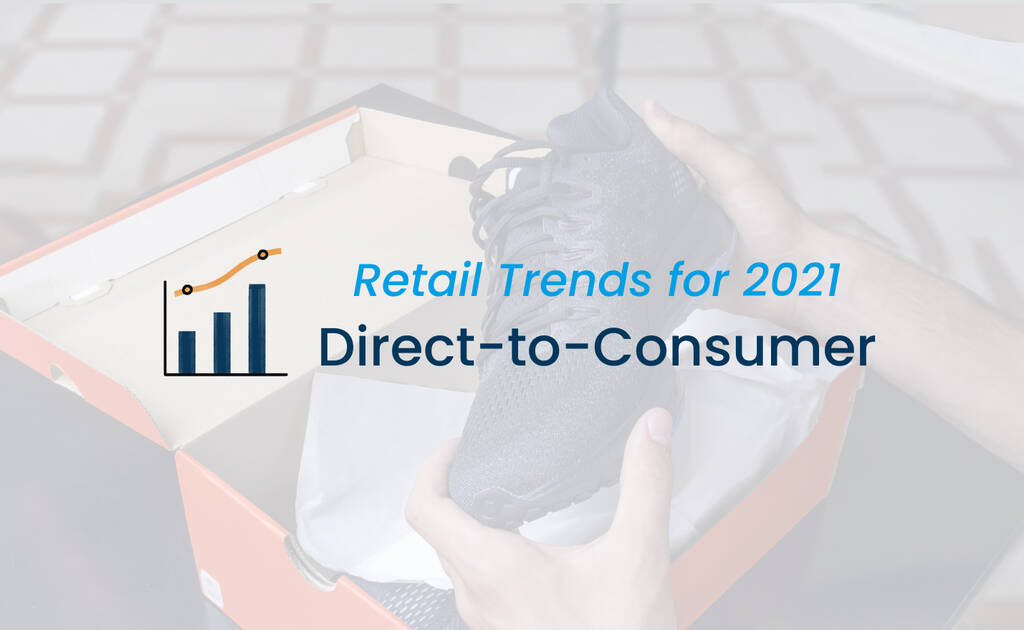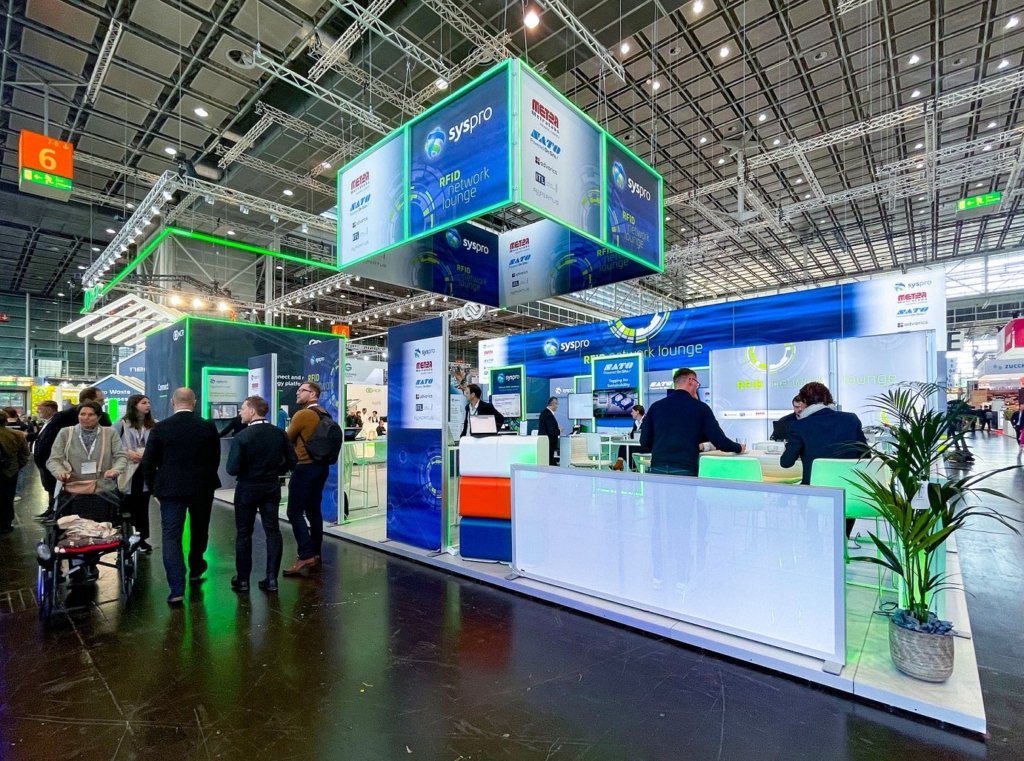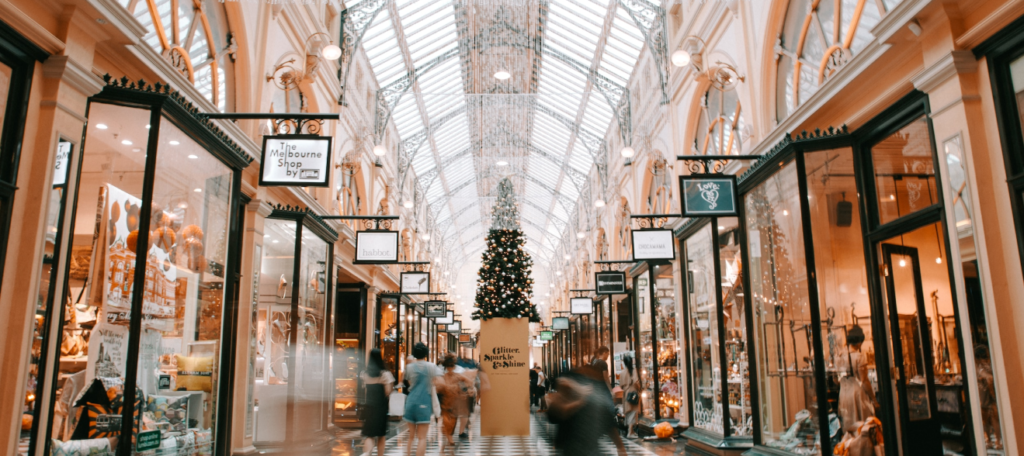A look at DTC retailing and its increasing popularity, plus if direct is the future, what does it mean for the industry going forward?
Is Direct to Consumer the future of retail?

In the penultimate instalment of our series running through predicted key trends for the upcoming year, we explore the direct to consumer (DTC) model. Over the last few years, DTC channels have gone from strength-to-strength because of the better margins and closer ties to customers from selling directly to consumers. In the aftermath of 2020 DTC, a mostly online channel is well-positioned in the new normal and beyond, which begs the question – is direct to consumer the future?
What is DTC retailing?
A direct-to-consumer model is where a manufacturer promotes and sells its products directly to consumers without ‘middlemen’ like third-party retailers or stores. DTC largely refers to eCommerce channels but can include brick-and-mortar stores in the case of larger brands who own and operate the entire product line and supply chain from source to store.
The most common sectors for DTC are fashion, consumer goods and housewares. The model was pioneered by independent retailers and start-ups, who took advantage of the minimal upfront costs and a gap in the market. The first DTC brands were often hyper-specialised, web-only, marketed heavily on social media with a well-defined brand identity, think dollar shave club and Warby Parker. In recent years bigger brands are utilising DTC as a channel, with fashion brands like adidas Nike, and Levi’s are investing heavily in the model. But why?
What are the Advantages of DTC?
You can benefit from better margins
When selling items through either their webshop or brand-owned stores, DTC retailers see more profit. The reasons for this are simple enough, as instead of third-party retailers selling their products for a profit, a brand can sell their products at a similar price at an improved profit margin by keeping the mark up for themselves.
You can increase customer loyalty
DTC offers more opportunity to connect with your customer, as all of the touchpoints are direct between them and the brand – with no one in-between. This means between your website; social media marketing and in-store experience customers get to know the brand behind the products. If this sounds trivial, it’s not – customers care more and more about a brand’s social values. With a DTC arm, it is easier to express a brands personality and foster a more connected loyal customer base.
You can make more data-driven decisions
By selling directly to their end customers, a brand gains far better insight and data on exactly who their customers are. In modern retailing, this kind of data is key, and when selling through a third party this information is lost. By removing the barrier between them and their customers, brands gain the data to market to their customers more effectively and are more mobile when it comes to product and brand positioning.
Where is DTC heading in 2021?
So, if DTC isn’t new, why are we talking about it as a key trend for the coming year? While the model has been growing stronger year-on-year, larger brands are starting to focus and lean on the direct channel, and for many, it is replacing the alternatives to become the primary channel. COVID-19 has undoubtedly accelerated this change. Since a large share of DTC is online, the explosion of eCommerce during this year has consolidated DTC’s position in the industry and for many retailers is providing an ideal opportunity to shift their focus to selling direct to consumers.
Who are the fashion retailers winning with DTC?
adidas
The global sports brand announced this year that it now makes a third of its sales direct-to-consumer. A large part of this is online, with their eCommerce channel seeing increases of 93% during the peak of the pandemic. Beyond COVID this looks set to continue, as adidas’ massive store network will continue to serve customers and deliver a uniquely adidas experience beyond the pandemic.
Levi’s
Similarly, Levi’s is a big proponent of DTC, even before the pandemic. At the start of the year, Levi’s publicly said they were confident that they would weather the impact of COVID better than many other brands because of their strong DTC business. And they were right – in April DTC sales were up 10% and their Net revenue for the quarter was even up 5%. Levi’s is also focused heavily on the experiential elements of DTC, with unique in-store experiences building closer ties with their customers “We’ve been on an intentional path to strengthen that direct relationship,” said Marc Rosen, Levi’s executive vice president.
Will the future be DTC only?
So, is Direct to consumer retailing the future, and if so, what does this mean for the industry at large? To again use the example of adidas, right at the start of the year the brand said they are aiming to generate 60% of their sales from direct retail by the end of 2020, showing that even before the pandemic brands are repositioning. The reasons why seem clear enough, with the mentioned benefits alongside increasing levels of eCommerce making increased reliance on DTC, especially for bigger brands, a no-brainer. But will retail of the future be entirely DTC? Exactly like when these questions come up for eCommerce, the answer is always more of a balance. Harmony between varied channels and offerings will always be optimal and foster greater resilience, but the balance can always shift – and DTC is looking like the king moving forward.
How can your DTC operations benefit from the Detego platform?
Product manufactures selling directly to customers is an end-to-end operation. So when trying to ensure accuracy and visibility, they need an end-to-end solution. For retailers running a DTC operation, the Detego RFID platform ensures the experience for customers is smooth and reliable, with products always available and seamless integration between online and offline channels. The RFID technology means brands can truly streamline their DTC channel with item-level visibility right from the factory to the customer – no errors, no guesswork. Our two examples of fashion retailers who are leading the way on direct, Levi’s and adidas, both use the Detego platform in their stores around the world. If you want to find out how the Detego platform can help you deliver to your customers, get in touch today!



